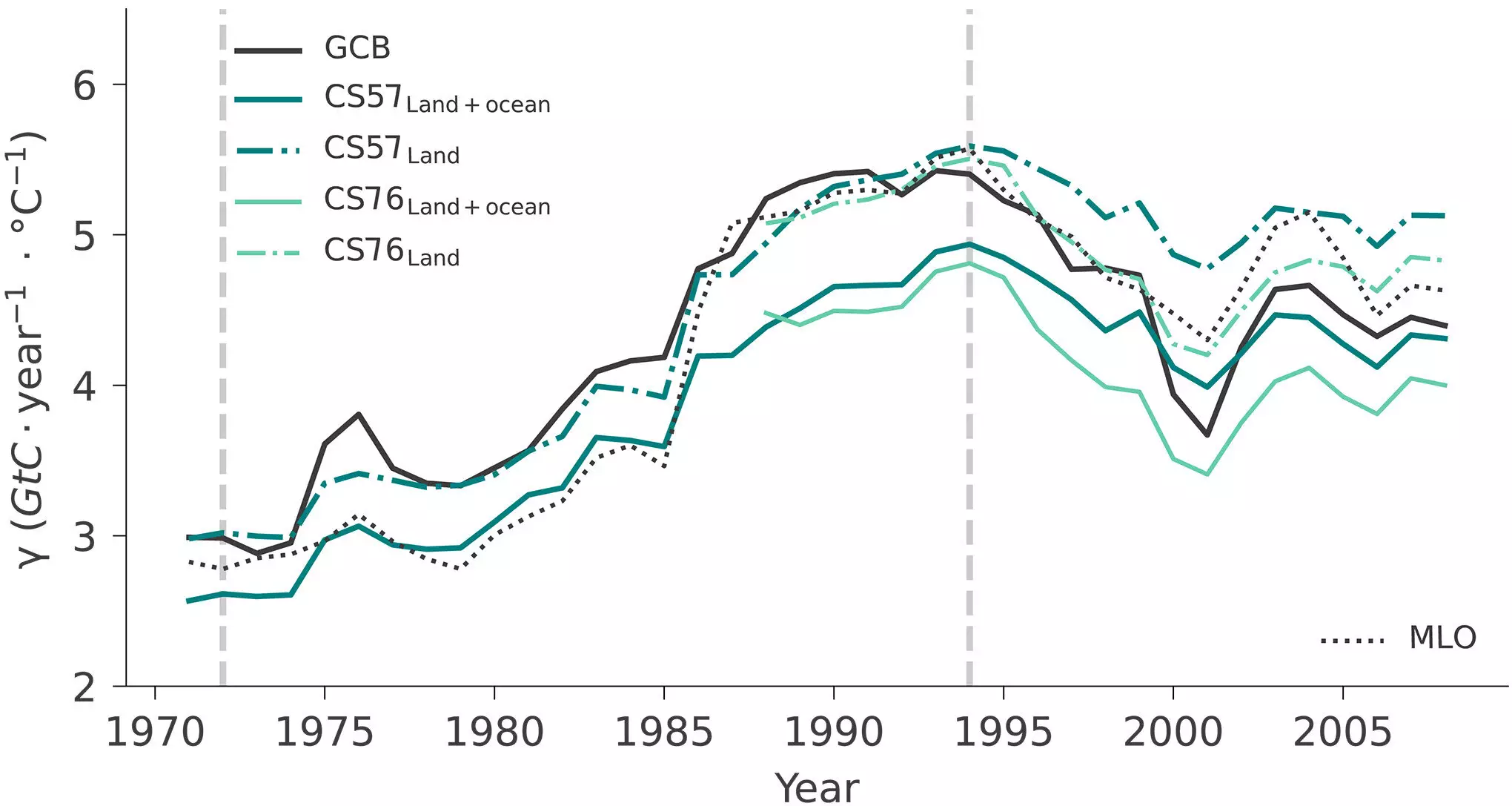The relationship between carbon dioxide (CO₂) levels in the atmosphere and tropical temperatures has long been a cornerstone of climate science. Traditional views have held that rising CO₂ levels are primarily driven by anthropogenic emissions and that these emissions would correlate closely with long-term temperature trends. However, a provocative new study from the Max Planck Institute for Biogeochemistry and Leipzig University has cast doubt on this longstanding narrative, revealing a more complex interplay driven by climate variability, particularly notable El Niño events. This article delves into the implications of this groundbreaking research, which not only revises previous assumptions but also enriches our understanding of future climate dynamics.
Conducted over an extensive timeframe from 1959 to 2011, the study’s key revelation concerns the responsiveness of atmospheric CO₂ levels to tropical temperatures, which has reportedly doubled. Whereas earlier research attributed heightened CO₂ sensitivity to prolonged droughts and long-term climate shifts, this new investigation presents a compelling argument: the dramatic fluctuation in CO₂ levels is largely shaped by a handful of intense El Niño events, particularly those occurring in the late 20th century such as the ones in 1982/83 and 1997/98.
El Niño, a naturally occurring phenomenon, brings about significant climatic disruptions, often resulting in severe droughts and heat waves in tropical regions. The ramifications of these episodes are profound; vegetation typically acts as a carbon sink, absorbing substantial amounts of CO₂, but during El Niño periods, the opposite occurs. Vegetation can become stressed, leading not only to reduced carbon uptake but also to the release of previously sequestered carbon stocks into the atmosphere. The study delineates this critical moment when El Niño conditions prevail, revealing that the atmospheric CO₂ increase is not solely an outcome of carbon emissions but rather a complex interaction of ecosystem responses to climate variabilities.
This research sheds light on the concept of “slow-in, fast-out” dynamics regarding carbon sequestration. Ecosystems can gradually absorb carbon over extended periods, but extreme weather events can precipitate rapid releases that alter net carbon balances. Professor Ana Bastos, a senior author on the study, elaborates on the dynamics of carbon storage and release, suggesting that the increasing frequency of extreme climatic phenomena necessitates a reevaluation of existing climate models. This finding underscores the need for an intricate understanding of how these events impact carbon cycling and, consequently, shape our global climate projections.
Redefining Future Climate Projections
The implications of this study extend far beyond academic interest. By challenging the assumption that increased CO₂ sensitivity to tropical temperatures is a permanent change in the carbon cycle, the study introduces a significant layer of nuance. It highlights the crucial role that extreme weather phenomena, such as El Niño, play in introducing short-term variability that does not necessarily correlate with long-term trends.
Dr. Sebastian Sippel points out the vital need for enhanced predictive models that incorporate the frequency and effects of extreme climate events. The results remind us that our understanding of carbon dynamics must evolve in tandem with the changing climate landscape. As extreme events become more prevalent in light of ongoing climate change, understanding their impact on carbon cycling will be essential for refining climate strategies.
The revelations put forth by the Max Planck Institute and Leipzig University researchers call for an urgent reassessment of how we interpret carbon sensitivity in relation to temperature changes, particularly in the tropics. As the climate crisis deepens, the intricate dance between natural variability and systemic change becomes critical to decipher. Future research must focus on integrating these dynamics into climate models to enhance their accuracy and utility in informing policy and mitigation strategies. As we forge ahead, the dialogue surrounding climate change must remain open and adaptable, reflecting the ongoing complexities revealed by studies such as this one. Understanding the link between climate phenomena and carbon dynamics could be pivotal in crafting a sustainable future.


Leave a Reply